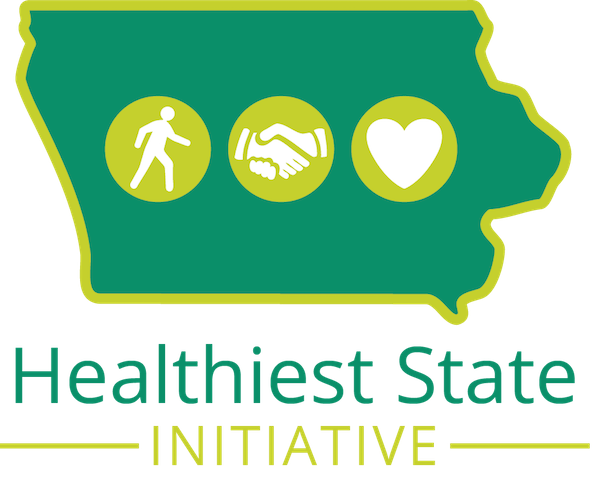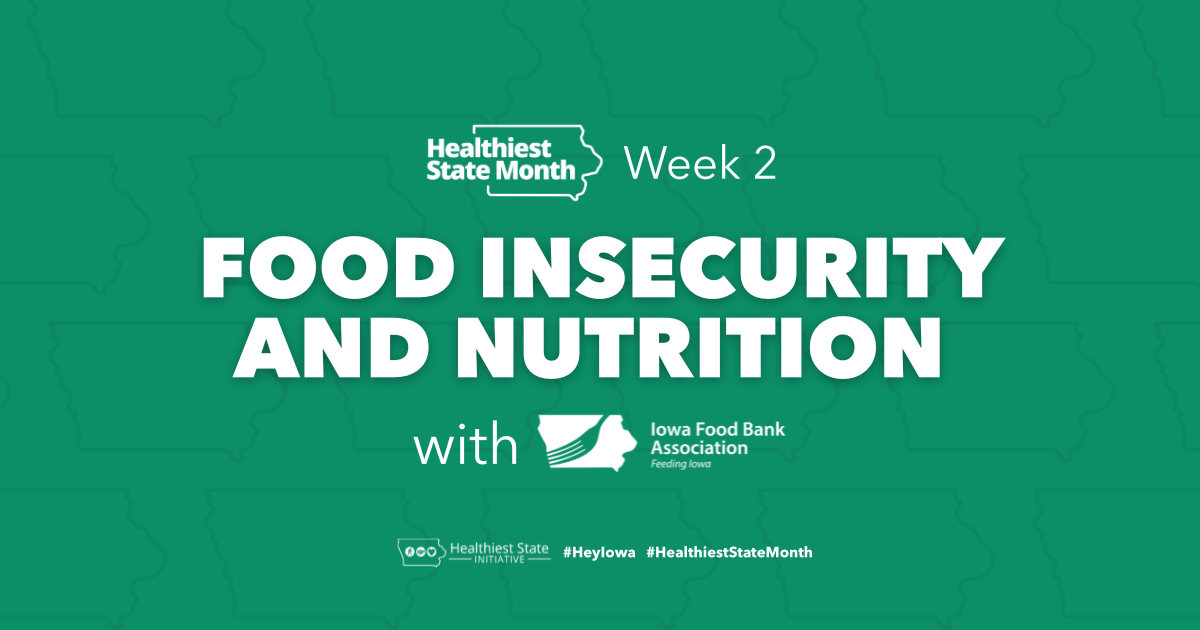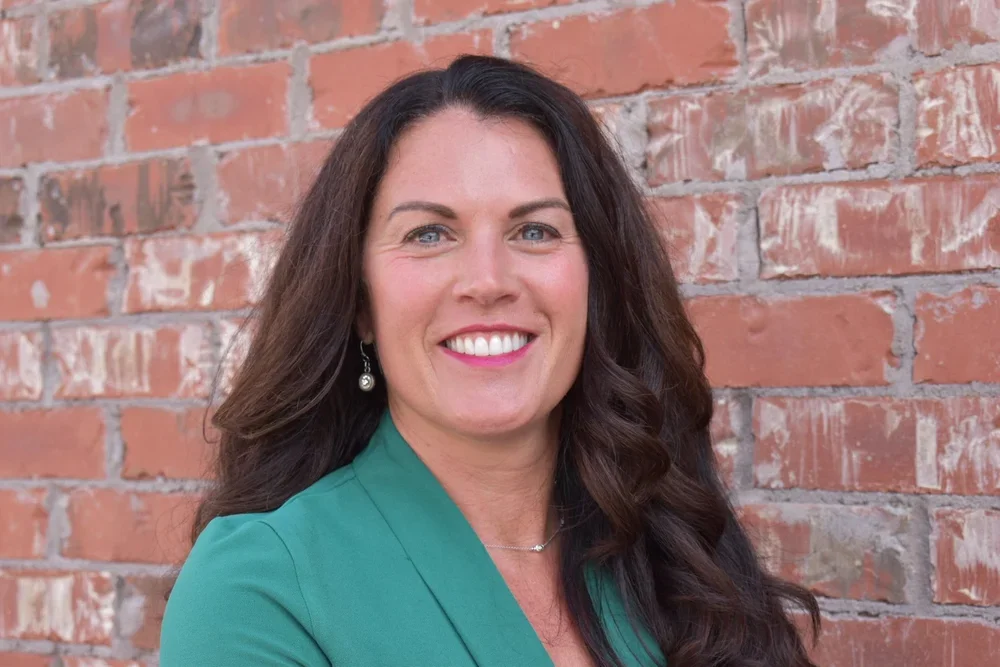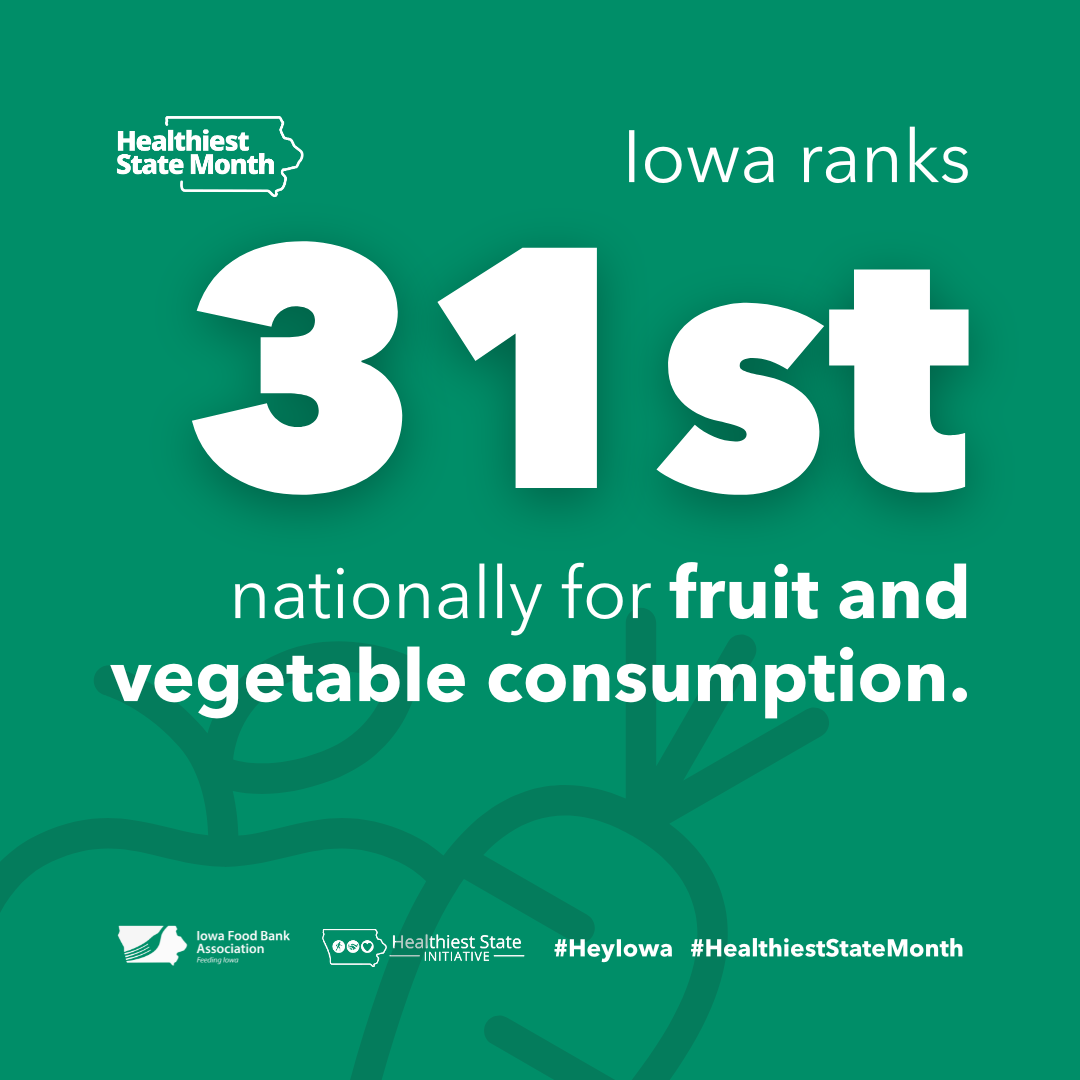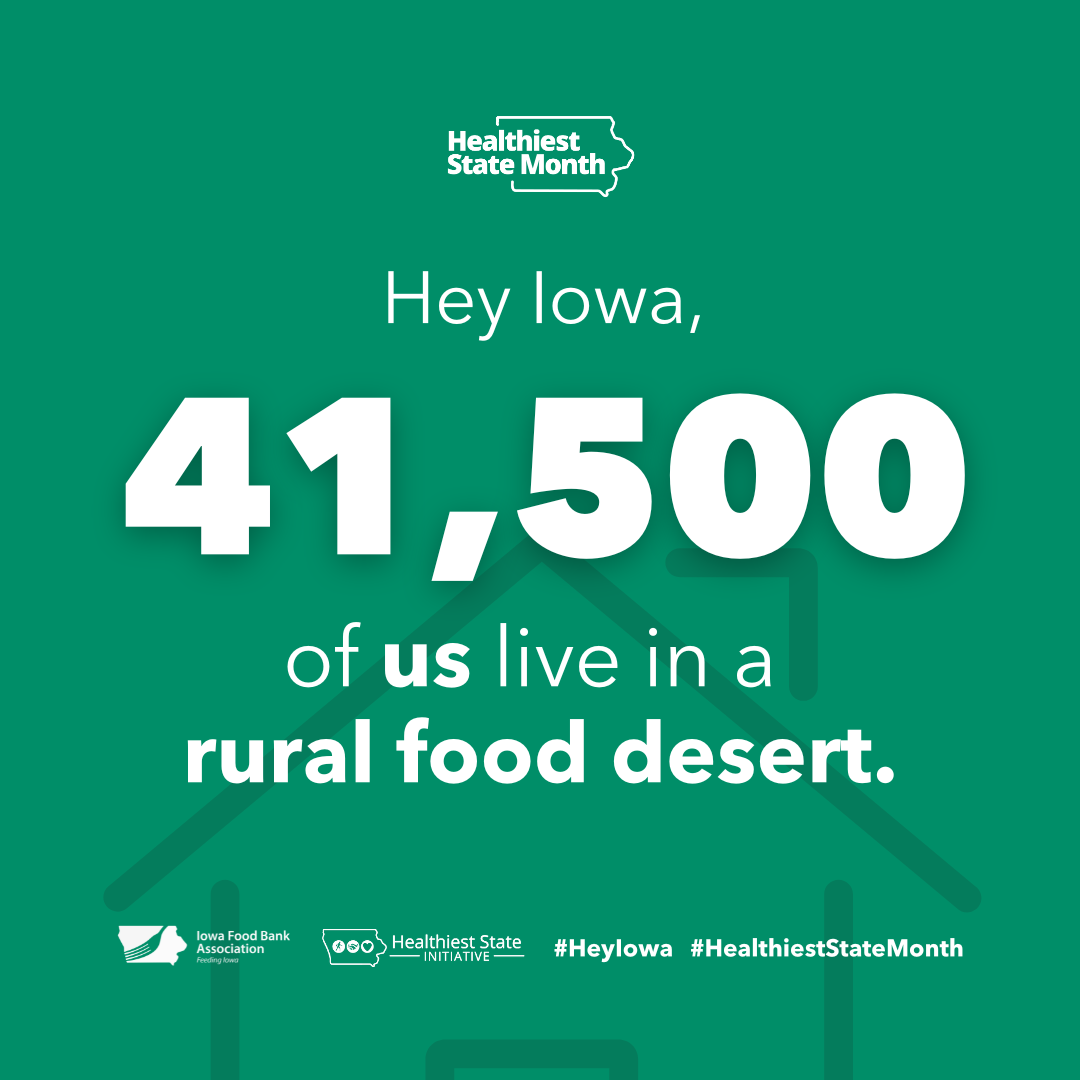Food Insecurity and Nutrition with The Iowa Food Bank Association - Healthiest State Month Week 2
Iowa Healthiest State Initiative Executive Director, Jami Haberl
The food we eat fuels our bodies, minds, and communities. Yet for many Iowans, eating well is far from simple. While food insecurity remains a serious challenge, we must also confront nutrition insecurity; the lack of access to foods that support long-term health.
Even when food is available, it’s often not the kind that nourishes. Iowa ranks 31st in the nation for fruit and vegetable consumption, and only 6.7% of adults eat the recommended five servings a day. This contributes to rising rates of obesity, diabetes, cancer, and other chronic diseases. If we want to build a healthier Iowa, we must ensure that everyone has access to nutrient-dense foods and the knowledge and habits to choose them.
It’s a painful irony; Iowa is a global leader in agriculture, yet according to Feeding America,1 in 8 adults and 1 in 6 children in our state face food insecurity. That’s more than 385,000 Iowans, including 120,000 children, who may go to bed hungry tonight. For many families, eating a healthy meal means choosing between groceries and rent, transportation, or medical care.
Rural communities face especially steep barriers. A 2022 study by the Iowa Waste Reduction Center found 111 rural food deserts, leaving 41,500 Iowans without nearby access to fresh, wholesome food.
Thankfully, programs are working to close the gap:
Double Up Food Bucks, led by the Iowa Healthiest State Initiative, helps SNAP users double their benefits when purchasing fresh fruits and vegetables at 172 locations statewide.
The Iowa Food Bank Association’s six-member food banks distributed more than 55 million meals in 2024 through programs and statewide network of 1,500+ pantries and nonprofits. Statewide food rescue work with food stores and manufacturers, the food banks and their pantries have diverted more than 33 million pounds of edible food from Iowa’s landfills to help feed Iowans in need of food.
The Choose Iowa Farm to Food Bank Program connects local farmers with food banks, supporting both food access and Iowa’s agricultural economy.
Yet even with these efforts, and the work of other organizations around the state, many Iowans still fall through the cracks. While programs like Double Up Food Bucks and food banks provide critical support, they are not long-term solutions on their own. Sustaining and expanding these initiatives, while also addressing the root causes of food and nutrition insecurity, is essential to building a healthier, more resilient Iowa.
Improving nutrition isn’t just about access, it’s about daily habits that support long-term health. The Iowa Healthiest State Initiative’s 5-2-1-0 Healthy Choices Count! framework is a good place to start, reminding us to eat five servings of fruits and vegetables each day. With two-thirds of Iowa adults living with overweight or obesity, adopting 5-2-1-0 and small, consistent actions can profoundly improve community health. Adults play a crucial role by developing these habits themselves and modeling them for children, helping prevent chronic diseases like diabetes, cancer, and obesity.
Iowa Food Bank Association Executive Director, Linda Gorkow
With food insecurity on the rise in all 99 counties every Iowan has a role to play in the solution.
Support your local food bank: Volunteer, donate fresh food or funds to purchase healthy foods and learn more about your local food bank. Iowa’s six food banks serve every corner of the state and are on the front line of the fight against food insecurity.
Advocate for policies that expand access to nutritious foods: Join Hunger-Free Iowa Day on the Hill on January 28, 2026 or sign up for advocacy updates at www.iowafba.org “Take Action” to raise your voice and sign up for the Iowa Food Bank Association legislative newsletter to stay engaged with updates on hunger-related issues.
Donate to Double Up Food Bucks: The Double Up Food Bucks Program supports food insecure Iowans, local farmers, and helps stimulate local economies. A $50 donation provides 61 servings of produce to a food insecure family or individual in Iowa.
The work ahead doesn’t just fall on individuals and being aware of the work being done in our communities is important to help spread the word. The Choose Iowa Farm to Food Bank program, now in its second year. Iowa has invested $200,000, matched by food banks, to buy Iowa-grown products directly from farmers—reducing food insecurity while supporting local agriculture. Farmers can apply to join and help feed their communities.
Another step is connecting Iowans with federal nutrition programs. The Iowa Food Bank Association and Iowa Department of Health and Human Services run SNAP Outreach through the SNAP Hotline (855-944-3663), offering free, one-on-one help with applications. The hotline runs Monday–Friday, 8 a.m.–5 p.m. and is especially important given that over 80% of eligible seniors in Iowa don’t receive SNAP benefits.
By uplifting local organizations and speaking out for policy solutions, we can create a healthier future for our state. But access is just the first step — building healthy habits is the next. Making fruits and vegetables a regular part of meals, creating lifelong healthy eating habits, and swapping sugary drinks for water are small but powerful actions that can improve lifelong health for all Iowans.
Spread the Word: Download these graphics for free and share them on social media with #HeyIowa and #HealthiestStateMonth!
Support the Iowa Healthiest State Initiative: The Iowa Healthiest State Initiative is a nonprofit, not a government agency, our work is made possible by the support of Iowans like you! Consider making a donation to help continue our work across the state!

